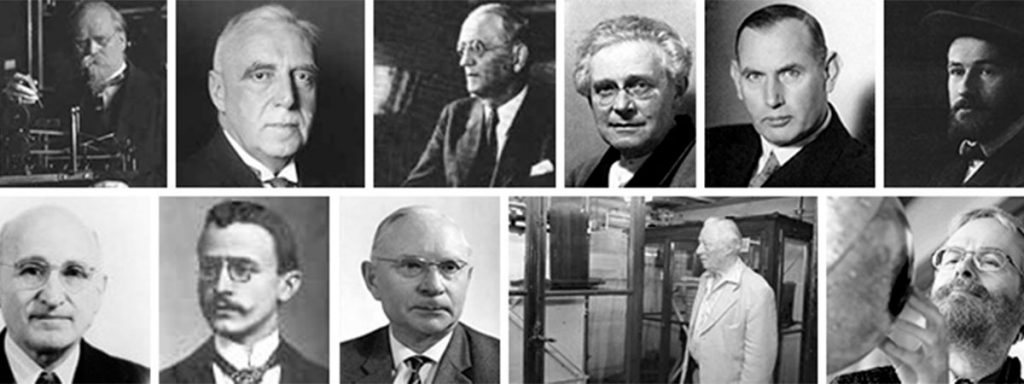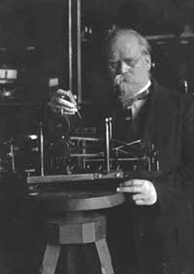
Emil Wiechert
the development of geophysics into an independent scientific discipline is closely connected with the person of Emil Wiechert
Emil Wiechert was appointed to the Chair of Geophysics in Göttingen in 1898, initially as associate professor, becoming full professor in 1905. The Institute of Geophysics was also established in 1898, originating from the Geomagnetic Observatory of Gauss and Weber, which had until then been domiciled at the observatory.
A renowned physicist
Wiechert, born in Tilsit, studied in Königsberg, where he attended the university’s famous mathematical-physics seminar, becoming acquainted with a number of scientists who later made outstanding contributions in their fields. He experimented with x-rays and cathode rays and, to put it short, is considered one of the “discoverers” of the electron. Wiechert had already been a renowned physicist when he came to Göttingen in 1897, where he continued to work in the field of physics.
Strong affinity to seismology
In the field of electrodynamics, his name is linked with the “Lienard-Wiechert potentials”. As the director of the new institute, it was his strong affinity to seismology that defined the institute’s main field of work, quickly earning it worldwide recognition. By developing the “theory of automatic seismographs”, Wiechert laid the foundation for constructing and understanding the mode of action of his seismographs, which still record the “tidings from afar” (as Wiechert put it) in the “Old Earthquake Vault” on the institute’s site. The “Wiechert-Herglotz method”, also named after Göttingen-based mathematician G. Herglotz, made it possible to infer the Earth’s interior from the seismograms produced on the Earth’s surface.
“Emil Wiechert Medal”
In appreciation of its initiator and his significance for geophysics, the German Geophysical Society (DGG) has awarded the “Emil Wiechert Medal” for outstanding scientific achievements since 1955.
In 1970, a crater on the Moon was named after Emil Wiechert.
Author: Manfred Siebert
Note: You can find a wonderful film on our website under “Mediathek – Videos” entitled “The earth is quaking – Emil Wiechert and the seismograph”.




